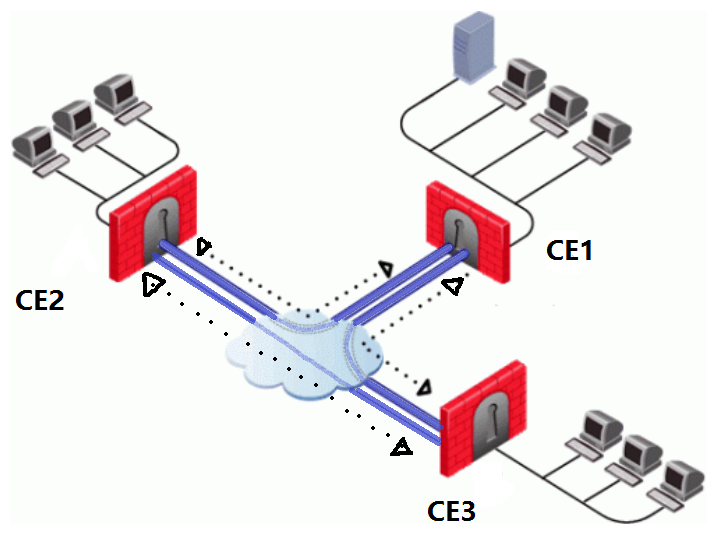You should understand the three
site-to-site VPN topologies before planning and creating your VPN configuration.
Peer-to-Peer VPN Topology
A single encrypted VPN gateway between two sites.
Full-Mesh VPN Topology
Every remote site is connected to every other remote site as well as the
central site. All remote sites can communicate directly with the central site and
with every
other remote site without need to route through the central site.
Full-mesh VPNs are extremely reliable, because all the remote sites can still
communicate even if the main site goes down. A full-mesh configuration also offers
reduced
latency for sensitive applications, because each remote site can communicate with
the other
remote sites directly.

Each device can set up a VPN connection with four other devices, including
third-party devices. Any two directly-connected peers can communicate. Any indirectly
connected peers cannot communicate.
Star VPN Topology
Multiple remote sites all connect to a central site. This topology resembles a
spoke and hub configuration. All remote sites can communicate directly with the central
site; however, for communication from one remote site to another remote site, the
IPsec
traffic must travel to the central site and then the hub device routes traffic to
the
destination remote site.

Star topologies support one hub device and four spoke devices, including
third-party devices (five total devices). A spoke device can communicate with the
hub device
directly. A spoke device communicates with other spoke devices indirectly as all IPsec
traffic is first sent to the hub device.

